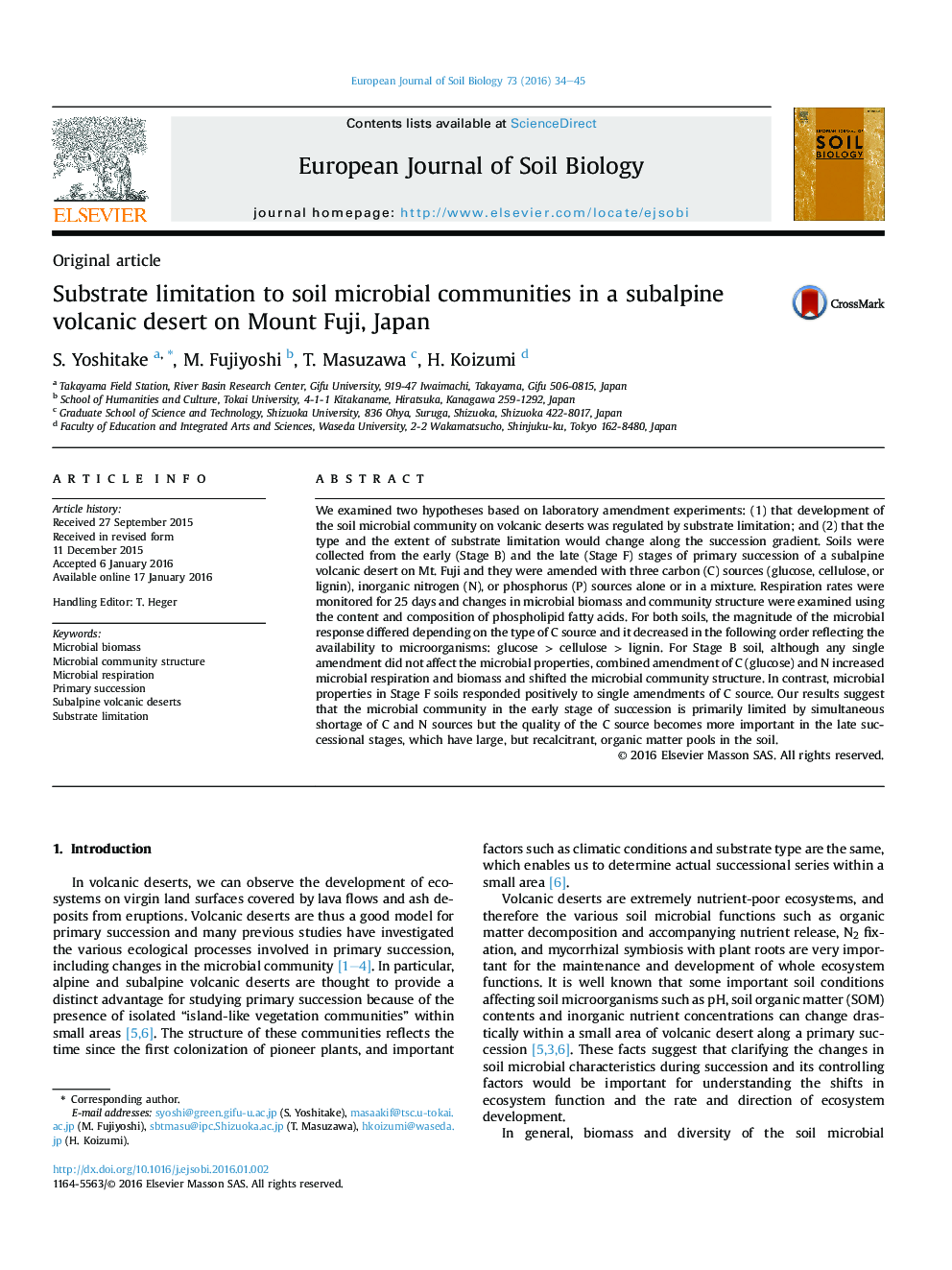| کد مقاله | کد نشریه | سال انتشار | مقاله انگلیسی | نسخه تمام متن |
|---|---|---|---|---|
| 4391717 | 1618119 | 2016 | 12 صفحه PDF | دانلود رایگان |

• Substrate limitation to soil microbial community in a volcanic desert was examined.
• Three C sources, inorganic N, and P were added to the soil alone or in combination.
• Substrate limitation was important in regulating microbial activity and growth.
• The type of substrate limitation could differ among microbial functional groups.
• Substrate limitation changed from CN- to labile-C limitation along the succession.
We examined two hypotheses based on laboratory amendment experiments: (1) that development of the soil microbial community on volcanic deserts was regulated by substrate limitation; and (2) that the type and the extent of substrate limitation would change along the succession gradient. Soils were collected from the early (Stage B) and the late (Stage F) stages of primary succession of a subalpine volcanic desert on Mt. Fuji and they were amended with three carbon (C) sources (glucose, cellulose, or lignin), inorganic nitrogen (N), or phosphorus (P) sources alone or in a mixture. Respiration rates were monitored for 25 days and changes in microbial biomass and community structure were examined using the content and composition of phospholipid fatty acids. For both soils, the magnitude of the microbial response differed depending on the type of C source and it decreased in the following order reflecting the availability to microorganisms: glucose > cellulose > lignin. For Stage B soil, although any single amendment did not affect the microbial properties, combined amendment of C (glucose) and N increased microbial respiration and biomass and shifted the microbial community structure. In contrast, microbial properties in Stage F soils responded positively to single amendments of C source. Our results suggest that the microbial community in the early stage of succession is primarily limited by simultaneous shortage of C and N sources but the quality of the C source becomes more important in the late successional stages, which have large, but recalcitrant, organic matter pools in the soil.
Journal: European Journal of Soil Biology - Volume 73, March–April 2016, Pages 34–45